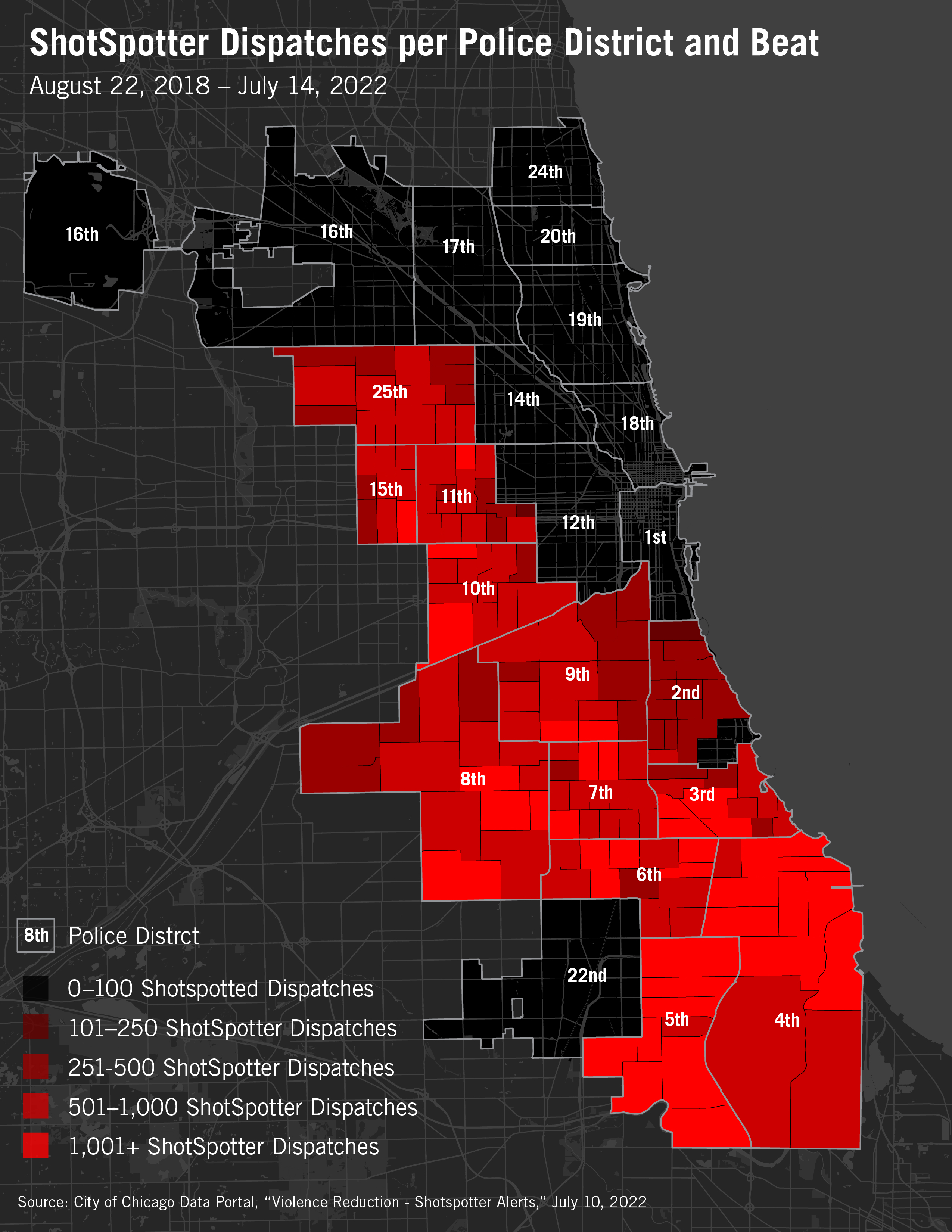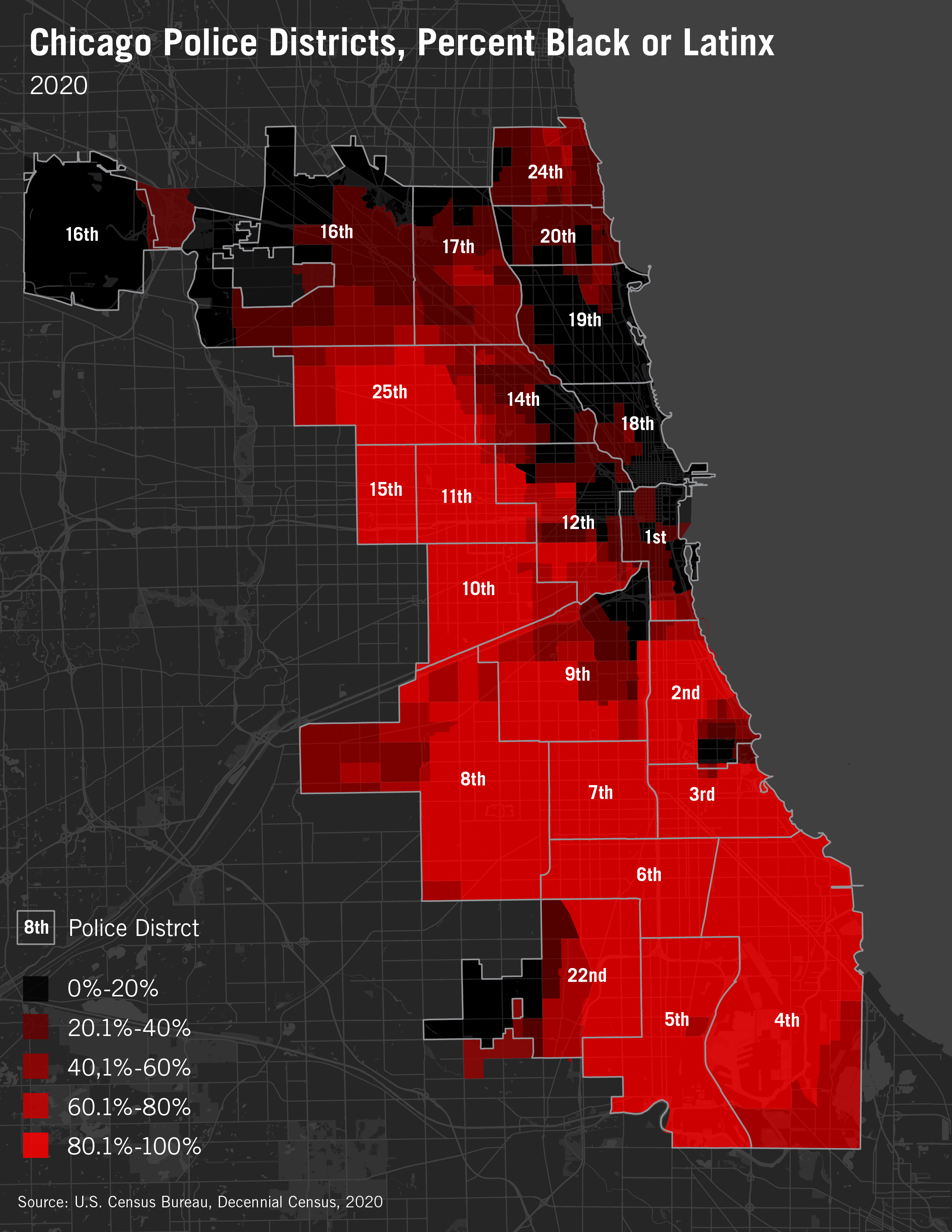ShotSpotter is a surveillance system that blankets select neighborhoods with microphones. It purports to distinguish the sound of gunfire from other noises and identify its location. ShotSpotter sends alerts of supposed gunfire directly to local police to investigate.
ShotSpotter creates thousands of unfounded police deployments, fuels unconstitutional stop-and-frisk, and can lead to false arrests.
What is ShotSpotter?
Key findings
Multiple analyses have now shown that more than 90% of ShotSpotter alerts lead police to find no evidence to corroborate gunfire when police arrive at the location ShotSpotter sent them: no shooting, no shell casings, no victims, no witnesses, no guns recovered.
The Chicago Office of Inspector General has found a link between ShotSpotter deployments and stop-and-frisk. Over 18 months, it found more than 2,400 stop-and-frisks linked to ShotSpotter. This is likely to be a significant undercount because of poor Chicago Police Department record-keeping.
In Chicago, ShotSpotter is only deployed in the police districts with the highest proportion of Black and Latinx residents. ShotSpotter deployments are concentrated only in those neighborhoods.
ShotSpotter is responsible for 1 in 12 of the highest priority (“Priority 1”) police dispatches in Chicago districts where ShotSpotter is active.


What we are doing about it
We have brought a class-action lawsuit against the City of Chicago to end the unconstitutional and discriminatory use of ShotSpotter, and to end unconstitutional ShotSpotter stop-and-frisks. We are also seeking justice for people like Michael Williams, who was falsely accused because of ShotSpotter.
What can I do
If you think you may have been stopped by CPD because of ShotSpotter, contact us. Usually, these kinds of police stops involve police officers aggressively questioning you about supposed gunfire. Often, multiple squad cars arrive.
Get involved in the grassroots campaign against ShotSpotter @StopShotSpotter on Instagram, and Twitter.